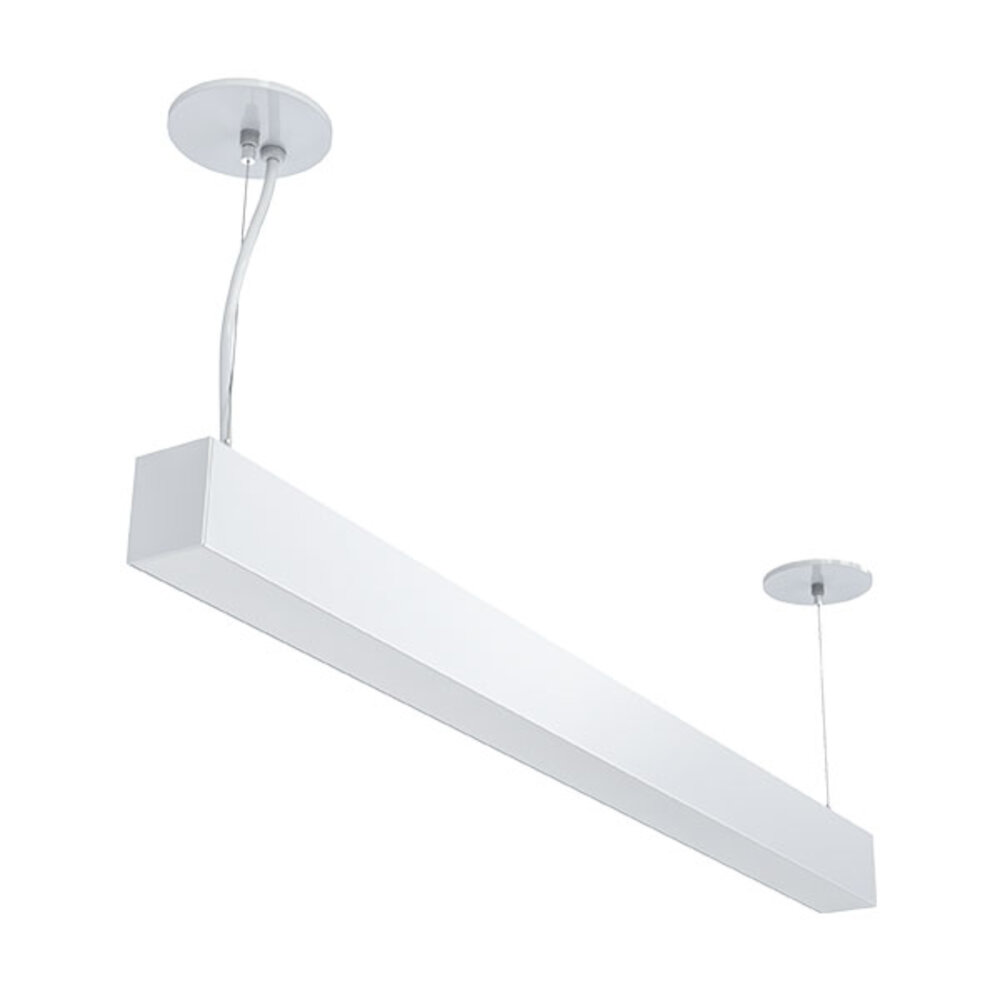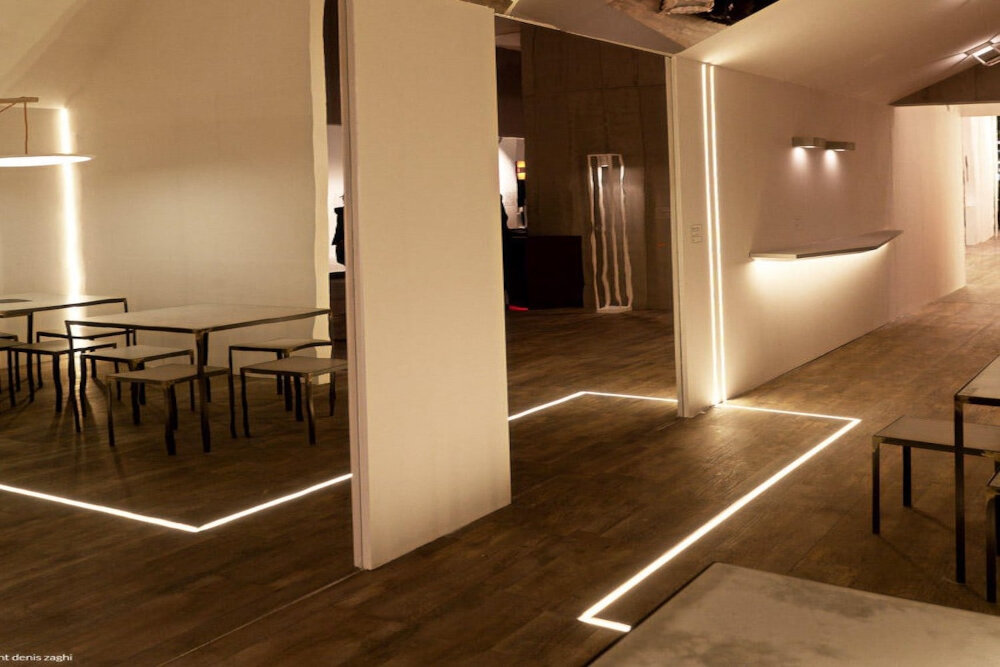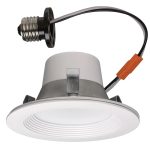Why LED Lights Flicker: Causes and Solutions

LED lights are undoubtedly the most energy-efficient and long-lasting lighting solutions available today. They consume significantly less energy than traditional incandescent bulbs and last up to 25 times longer, making them an excellent investment for both residential and commercial spaces. However, despite their numerous benefits, LED lights can sometimes flicker, causing discomfort and annoyance to the users. Flickering LED lights can be caused by several factors, from incompatible dimmer switches to electrical problems, and can potentially damage the bulbs’ lifespan. Therefore, it is crucial to understand the causes and solutions of LED lights flickering to ensure their optimal performance and durability. One of the most common causes of LED lights flickering is the use of incompatible dimmer switches. Unlike traditional incandescent bulbs, LED lights require specialized dimmer switches that are designed to match their low voltage and power requirements. Using a dimmer switch that is not compatible with the LED light can cause flickering, buzzing, or even damage to the bulb. Furthermore, the age and quality of the dimmer switch can also affect the performance of LED lights. Older or low-quality dimmer switches may not be able to handle the low voltage required by the LED lights, leading to flickering or dimming when the switch is turned on or off.
Causes of LED Flickering

LED lights have become a popular choice for lighting due to their energy efficiency, longevity, and cost-effectiveness. However, one of the most common problems with LED lights is flickering, which can be frustrating and can cause eye strain. LED flickering can be caused by different factors, including voltage fluctuations, incompatible dimmer switches, and poor quality LED bulbs. Voltage fluctuations are one of the primary causes of LED flickering. If the voltage supplied to the LED bulb fluctuates, the light output will also fluctuate, causing the LED to flicker. This can be caused by various factors, including faulty wiring, overloaded circuits, and electrical storms. To prevent voltage fluctuations, it is essential to ensure that the wiring and electrical circuits in your home or office are in good condition and are not overloaded. It is also recommended to install voltage regulators or stabilizers to prevent voltage fluctuations and protect your LED lights from damage. Another cause of LED flickering is incompatible dimmer switches. Traditional incandescent bulbs and modern LED bulbs have different electrical requirements, and using a dimmer switch that is not compatible with LED bulbs can cause flickering. To prevent LED flickering, it is recommended to use a dimmer switch that is specifically designed for LED bulbs. These dimmer switches are designed to deliver a consistent flow of electricity, preventing voltage fluctuations and ensuring a stable light output. Furthermore, using high-quality LED bulbs that are designed to work with dimmer switches can also prevent flickering and ensure a smooth dimming experience.
Voltage fluctuations are a common problem that can cause LED lights to flicker. These fluctuations occur when the voltage supplied to the light source is not consistent. This can happen for a variety of reasons, including power grid issues, faulty wiring, or power surges. When voltage fluctuations occur, the LED lights may flicker, dim, or even turn off completely. This not only affects the aesthetics of the lighting but can also cause headaches and eye strain for those using the space. To solve this problem, it is important to identify the source of the voltage fluctuations and take appropriate steps to stabilize the voltage supply. This may involve installing voltage regulators or improving the wiring in the building.
Incompatible dimmer switches are often the reason behind LED lights flickering. This issue arises when LED lights are used with an old dimmer switch that was designed for traditional incandescent bulbs. The reason behind this incompatibility is that LED lights work differently than traditional bulbs. They require a specific type of dimmer switch that is designed to work with LED technology. Using an incompatible dimmer switch can cause the LED lights to flicker, buzz, or even not turn on at all. Therefore, it is crucial to ensure that the dimmer switch you are using is compatible with LED lights to avoid any flickering issues.
Loose wiring connections, whether in the electrical circuit or the bulb socket, is a common cause of LED lights flickering. When the wiring or the bulb socket is not properly connected, it can create an intermittent flow of electricity, resulting in a flickering effect. This issue can be easily resolved by checking the wiring connections and tightening any loose connections. However, it is important to note that loose wiring connections can also be a sign of a more serious problem with the electrical system, so it is recommended to consult a professional if the issue persists.
Overheating is a common problem that causes LED lights to flicker. When the temperature inside the LED bulb exceeds its tolerance level, the bulb may flicker, dim, or even turn off. This can be caused by a variety of factors such as poor ventilation or improper installation. In addition, LED bulbs that are placed in enclosed fixtures are more likely to overheat due to the lack of airflow. Overheating not only affects the performance of the LED bulb but can also reduce its lifespan. Therefore, it is important to ensure that the LED bulbs are properly installed and have adequate ventilation to prevent overheating and flickering issues.
LED drivers are electronic devices that regulate the power to LED lights. These drivers can encounter various issues, leading to flickering LED lights. One common issue is overloading, which occurs when the driver is not powerful enough to handle the voltage of the LEDs. Another issue is voltage drop, which happens when the wiring between the driver and the LEDs is too long, causing a drop in voltage. Additionally, poor quality drivers can cause flickering due to inconsistent power delivery. To avoid LED driver issues, it’s important to choose high-quality drivers that are suitable for the specific LED lights being used and to ensure that wiring is properly installed and not too long.
As LED bulbs age, they may start to flicker or dim, reducing their brightness and efficiency. This is due to the natural degradation of the LED components over time, causing fluctuations in the electrical current that powers them. Additionally, overheating can accelerate this process, as can exposure to harsh environmental factors such as moisture or dust. To avoid premature aging of LED bulbs, it is important to choose high-quality brands and fixtures, use appropriate wattage and voltage, and ensure proper ventilation and maintenance of the fixtures. Regular cleaning and replacement of damaged components can also extend the lifespan and performance of LED bulbs.
Solutions to LED Flickering

LED lights have become increasingly popular due to their energy efficiency and durability. However, one issue that has plagued LED lights is flickering. Flickering in LED lights can be caused by a variety of factors, including voltage fluctuations, incompatible dimmer switches, and faulty wiring. This flickering can be not only annoying but also harmful to people who suffer from migraines or epilepsy. Fortunately, there are several solutions to LED flickering that can help eliminate this problem. One solution to LED flickering is to use a high-quality LED driver. LED drivers are devices that regulate the voltage and current supplied to the LED, ensuring that it operates at the correct level. A high-quality LED driver can help eliminate voltage fluctuations that may cause flickering. Another solution is to use an LED-compatible dimmer switch. Many dimmer switches are designed for use with traditional incandescent bulbs, which can cause flickering in LED lights. By using a dimmer switch specifically designed for LED lights, you can eliminate this flickering. Additionally, ensuring that your wiring is up to code and properly installed can help eliminate flickering caused by faulty wiring. Overall, by addressing the root cause of LED flickering, you can ensure that your LED lights operate smoothly and without issue. In conclusion, LED flickering can be caused by a variety of factors, including voltage fluctuations, incompatible dimmer switches, and faulty wiring. However, there are several solutions to this problem, including using a high-quality LED driver, using an LED-compatible dimmer switch, and ensuring that your wiring is up to code. By addressing the root cause of LED flickering, you can ensure that your LED lights operate smoothly and without issue, providing you with the energy efficiency and durability that LED lights are known for.
Using high-quality LED bulbs is one of the most effective ways to combat flickering LED lights. LED lights are more energy-efficient, longer-lasting, and eco-friendly than traditional bulbs. However, low-quality LED bulbs can cause flickering due to their poor construction and substandard components. High-quality LED bulbs, on the other hand, are designed with excellent materials and components that reduce the risk of flickering. They are also equipped with advanced features such as dimming capabilities and color temperature control, ensuring you have a comfortable and stable lighting experience. Investing in high-quality LED bulbs is a smart decision for anyone looking to enjoy the benefits of LED lighting without having to deal with the frustration of flickering lights.
When it comes to lighting, dimmer switches can add ambiance and energy efficiency to any room. However, not all dimmer switches are compatible with LED lights, which can result in flickering. It’s essential to choose a dimmer switch that is designed to work with LED lights to avoid this issue. A compatible dimmer switch will regulate the flow of electricity to the LED lights, preventing flickering and ensuring the bulbs’ longevity. Installing a compatible dimmer switch is an easy and cost-effective solution to the problem of LED lights flickering, allowing you to enjoy the benefits of both dimmer switches and LED lights simultaneously.
One of the common causes of flickering LED lights is loose or faulty wiring connections. Electrical connections that are not properly secured can cause fluctuating power supply to the LED lights, leading to flickering. Loose connections can also lead to excessive heat buildup and even a fire hazard. To fix the issue, it is important to check and tighten all wiring connections. This involves ensuring that all connections are properly seated and secured, and tightening any loose connections. It is also important to inspect the wiring for any signs of damage or wear, such as frayed wires or broken insulation, which can also cause flickering. By regularly checking and tightening wiring connections, LED lights can operate smoothly and safely without any flickering issues.
LED drivers are an essential component in ensuring the efficient and reliable operation of LED lights. These devices regulate the voltage and current supplied to the LED, which is crucial in preventing flickering and other issues that can affect the performance and lifespan of the lights. LED drivers can also adapt to changes in the input voltage, ensuring that the LED receives a stable and consistent power supply. Additionally, they can provide dimming capabilities, allowing users to adjust the brightness of their LED lights to suit their needs. When selecting an LED driver, it is important to consider factors such as the voltage and current requirements of the LEDs, as well as the type of dimming control needed.
Voltage stabilizers are an essential component for maintaining a stable voltage supply to the LED lights. These devices ensure that the voltage supplied to the lights remains within a specific range, preventing fluctuations that can cause flickering. Installing a voltage stabilizer is a relatively simple process that involves connecting the device between the power source and the LED lights. However, it is important to choose a stabilizer that is compatible with the voltage requirements of the lights and can handle the power load. Some stabilizers may also offer additional features such as surge protection and overvoltage protection, which can further enhance the lifespan and performance of the LED lights. Overall, installing a voltage stabilizer is an effective solution to prevent flickering in LED lights and ensure a consistent and stable supply of power.
If you’ve noticed that the LED bulbs in your home or office are flickering, it may be time to replace them. Aging LED bulbs can cause flickering due to a decrease in their overall brightness and power output. This decrease in power can cause the bulb to flicker or even fail entirely. By replacing your aging LED bulbs with new ones, you can ensure that your lighting is consistent and reliable. Additionally, newer LED bulbs may be more energy-efficient and offer improved performance, making them a worthwhile investment for any space. So, if you’re experiencing flickering LED lights, consider replacing your bulbs for a more consistent and reliable lighting experience.
How to Prevent LED Flickering

LED lights have become increasingly popular for their energy efficiency and long lifespan. However, one common issue with LED lights is flickering. LED flickering occurs when the light dims and brightens rapidly, which can cause eye strain and headaches. There are several causes of LED flickering, including voltage fluctuation, incompatible dimmer switches, and poor quality bulbs. Fortunately, there are several ways to prevent LED flickering and enjoy the benefits of LED lighting. One effective way to prevent LED flickering is to ensure that the voltage is stable. LED lights require a consistent voltage to function properly, and voltage fluctuations can cause flickering. Installing a voltage stabilizer or using a high-quality power supply can help regulate the voltage and prevent flickering. Additionally, using compatible dimmer switches can prevent flickering. LED lights are not compatible with all dimmer switches, so it is important to choose a dimmer switch specifically designed for LED lights. Finally, choosing high-quality LED bulbs can prevent flickering. Poor quality bulbs may not be able to handle the voltage or may not be designed for use with dimmer switches, leading to flickering. By taking these steps, you can prevent LED flickering and enjoy the benefits of LED lighting.
When it comes to electrical work, it is always best to hire a professional electrician. They have the experience, knowledge, and tools to safely and effectively work on your electrical system, which is crucial when it comes to preventing electrical hazards and ensuring your safety. When it comes to LED lights flickering, a professional electrician can diagnose the issue and provide the necessary solutions. They can check the wiring, connections, and voltage levels to ensure that everything is functioning properly. Additionally, they can recommend high-quality LED bulbs and dimmers that are compatible with your electrical system, which can prevent flickering and extend the lifespan of your bulbs. Overall, hiring a professional electrician is a wise investment that can save you time, money, and most importantly, ensure your safety.
When it comes to choosing an LED bulb brand, quality should be your top priority. Opting for a reputable brand ensures that you get a product that is reliable, efficient, and long-lasting. Brands like Philips, Cree, and GE are known for producing high-quality LED bulbs that have a long lifespan, low energy consumption, and excellent color rendering. These brands also offer a wide range of options to choose from, so you can select the right bulb for your needs, whether it’s for indoor or outdoor use. Additionally, choosing a quality LED bulb brand can help you avoid the issue of flickering, as these bulbs are designed to operate smoothly and consistently, providing you with a reliable source of light for years to come.
If you are experiencing flickering with your LED lights, one possible solution is to use compatible dimmer switches. LED lights are designed to work with specific types of dimmer switches, and using the wrong one can cause flickering. When selecting a dimmer switch, it is important to consider the wattage of your LED lights, as well as the type of dimming technology used in the switch. Some LED lights may require a specific type of dimmer switch, such as a trailing edge or leading edge dimmer. By using a compatible dimmer switch, you can effectively control the brightness of your LED lights without experiencing any flickering or other issues.
Overloading circuits can occur when too many devices or appliances are connected to a single circuit, causing it to exceed its maximum capacity. This can lead to flickering LED lights, as well as other electrical problems. To avoid overloading circuits, it’s important to distribute the load evenly across multiple circuits, and to avoid connecting high-wattage devices to the same circuit as low-wattage devices. Additionally, it’s important to ensure that the wiring in your home is up to code and can handle the electrical load. By taking these steps, you can help prevent flickering lights and other electrical issues caused by overloaded circuits.
Keeping LED bulbs cool is essential to avoid flickering and extend the lifespan of the bulb. Heat is the enemy of LED lights as it can damage the diodes and cause them to fail prematurely. There are several ways to keep LED bulbs cool, such as using heat sinks, ensuring proper ventilation, and avoiding tightly enclosed fixtures. Heat sinks absorb and dissipate heat away from the bulb, while proper ventilation allows for air to circulate and cool the bulb. Tightly enclosed fixtures trap heat and can cause the bulb to overheat. By implementing these measures, you can ensure that your LED bulbs remain cool and prevent flickering and other issues that may arise from excessive heat.
LED flickering can be a considerable nuisance and even dangerous to your eyesight. The rapid and irregular fluctuations in the light intensity can cause eye strain, headaches, and even seizures in some individuals. Moreover, flickering LED lights can trigger migraines and worsen the symptoms of photosensitive epilepsy, a neurological disorder that causes seizures in response to flickering lights. The potential health risks associated with LED flickering make it crucial to address this issue promptly and effectively. By understanding the causes of LED flickering and implementing appropriate solutions, we can ensure that our lighting systems are safe, reliable, and comfortable to use.
LED lights are becoming increasingly popular in modern homes and businesses for their energy efficiency and long lifespan. However, one issue that can arise with these lights is flickering. LED flickering can be caused by a variety of factors, including voltage fluctuations, incompatible dimmer switches, or poor quality LED bulbs. Understanding the causes of LED flickering is important in order to prevent and fix the issue. Some solutions include installing high-quality LED bulbs, using compatible dimmer switches, or installing voltage regulators. By taking these steps, you can ensure that your LED lights provide consistent, high-quality lighting without any flickering or other issues.
It is always wise to seek the help of a professional electrician if you are unsure about the safety of your electrical setup. This is particularly important when it comes to LED lights, as the causes of flickering can be complex and difficult to diagnose. A professional electrician will have the knowledge and expertise to identify the root cause of the problem, and recommend the appropriate solutions to ensure that your LED lights are safe and functioning properly. Attempting to fix electrical issues on your own can be dangerous and may result in further damage to your property or even injury. Don’t take any chances with your safety or the safety of others – always consult with a professional electrician for any electrical concerns.
Conclusion

In conclusion, LED lights are a great energy-efficient lighting solution, but they can sometimes flicker, causing annoyance and discomfort. The main causes of flickering are voltage fluctuations, incompatible dimmer switches, and faulty LED drivers. To solve this issue, one can try using voltage stabilizers or upgrading to compatible dimmer switches. It is also important to choose high-quality LED bulbs and ensure proper installation. By following these solutions, one can enjoy the benefits of LED lighting without any flickering issues.




